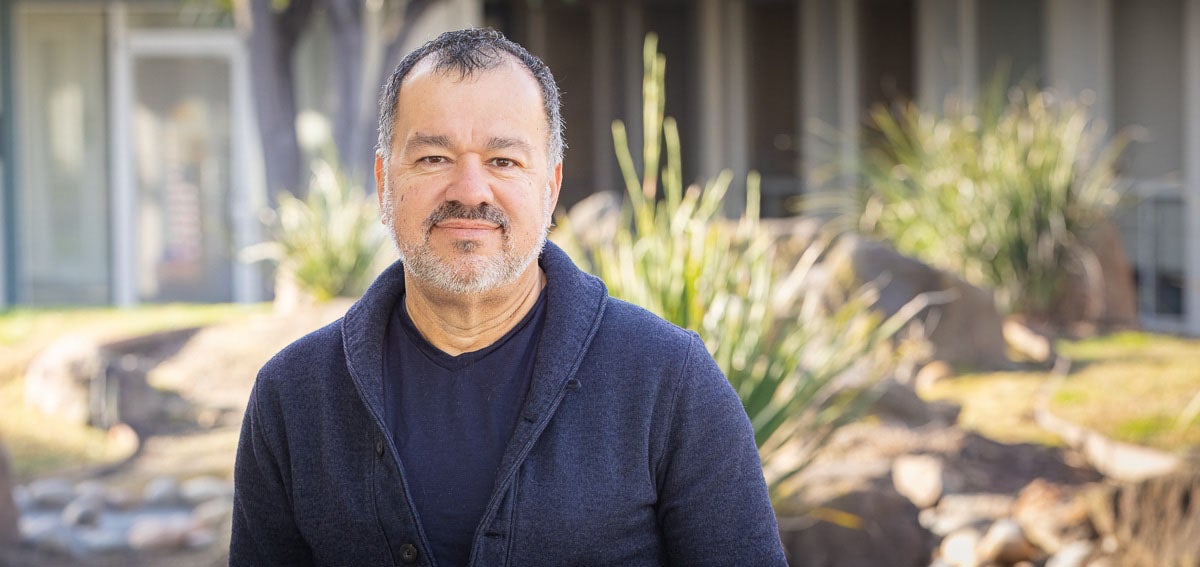|
Getting your Trinity Audio player ready…
|

California voters next spring will get to decide on a ballot measure to create housing and treatment options, especially for individuals with serious mental illness who are experiencing homelessness. If it passes, the measure championed by Governor Gavin Newsom would mark the first major overhaul of the state’s community mental health system in 20 years.
The two-pronged proposition on the March primary election ballot includes a nearly $6.4 billion bond to build 10,000 treatment units and supportive housing. It also asks voters to redefine how counties spend money collected from a special “millionaire’s tax” to allocate a share of it for housing for people with behavioral health illnesses.
Newsom and supporters have promoted Proposition 1 as a way to help address the state’s deteriorating homelessness and addiction crises. They contend increased investment and an update to the state’s Mental Health Services Act is “long overdue.”
The Legislature on September 14 overwhelmingly backed his proposal, with lopsided votes to place it on the 2024 ballot. Newsom still must sign the bills, and he said he would in a written statement after a late-night vote in the Assembly.
“These measures represent a key part of the solution to our homelessness crisis, and improving mental health for kids and families,” Newsom said. “Now, it will be up to voters to ratify the most significant changes to California’s mental health system in more than 50 years.”
Opponents of the ballot measure say diverting money in the Mental Health Services Act for housing will result in up to $1 billion in cuts to current mental health programs like outpatient care and crisis response. Other advocates criticize the governor for making last-minute changes to the bond, allowing the money to be spent on involuntary treatment institutions.
So what exactly are voters being asked to consider? Here’s how the proposal breaks down.
What Is the Mental Health Services Act?
The Mental Health Services Act, which voters passed as a ballot measure in 2004, levies a 1% tax on personal income over $1 million. It passed at a time when the state’s mental health system was severely underfunded. Since then, the tax has generated an estimated $26 billion for county mental health programs. Last year the tax garnered more than $3 billion. It supports roughly one-third of the state’s mental health system.
The tax is not California’s only source of revenue for mental health programs. The state also receives money from Medi-Cal, and it spends a portion of its general fund on those services. Those sources come with strict spending limitations. For example, Medi-Cal primarily pays for treatment of mental health disorders but will not cover prevention programs. It also will not pay for inpatient treatment at a facility with more than 16 beds.
Counties have come to rely on the relative flexibility of Mental Health Services Act dollars to pay for core services like outpatient care, outreach and engagement, school-based counseling, youth wellness programs, family resource centers, and crisis response teams.
What Does Newsom Want to Do?
The most significant change put forth by the governor is a requirement that counties invest 30% of their Mental Health Services Act tax dollars — roughly $1 billion based on last year’s revenue — in housing programs, including rental subsidies and navigation services. Counties would have to spend half this money on people who are chronically homeless or living in encampments. They could also use up to one-quarter of the money to build or purchase housing units.
Sacramento Mayor Darrell Steinberg has been a staunch supporter of Newsom’s proposal. Steinberg was one of the co-authors of the Mental Health Services Act when he was an assemblymember in 2004.
“To put it plainly, not enough of the Mental Health Services Act dollars are getting out to the people with the most persistent mental illnesses, specifically people who are chronically homeless and living with those underlying conditions,” Steinberg said during a press call in August. “So that’s where you start.”
The ballot measure puts counties on the hook for paying for substance use disorder treatment with Mental Health Services Act money. Counties have historically paid for addiction treatment with other funding.
And, it renames the program as the Behavioral Health Services Act.

What Will the Bond Measure Do?
The second half of Newsom’s proposal places a $6.4 billion general obligation bond before voters to dramatically expand the state’s psychiatric and addiction treatment infrastructure.
Nearly $4.4 billion would go toward building inpatient and residential treatment beds and could serve 100,000 people annually, officials said. California faces a shortage of nearly 8,000 adult psychiatric beds (PDF), said Nicole Eberhart, senior behavioral health scientist for the RAND Corporation, during testimony to an Assembly budget subcommittee in May. Long waitlists plague the state’s inpatient mental health system, and doctors say there’s nowhere to send stable patients who need long-term treatment focused on recovery.
Another $2 billion will go toward building permanent supportive housing, with half set aside for veterans with mental health diagnoses or addiction disorders.
How Many People Are Unhoused in California?
More than 170,000 Californians are unhoused, the vast majority of whom live in street encampments. California has the highest homeless rate per 10,000 people, second only to the District of Columbia, and the highest proportion of unsheltered homeless individuals in the country, according to federal data.
A landmark study by the UCSF Benioff Homelessness and Housing Initiative found about two-thirds of unhoused Californians surveyed suffered from a mental health disorder, but only 19% had received recent treatment. The driving force behind homelessness, however, was most often income loss, not mental illness or addiction, according to the study.
Who Are the Supporters?
Senator Susan Talamantes Eggman, a Democrat from Stockton, carried the proposed reform of the Mental Health Services Act in the Legislature. During the Senate concurrence vote, Talamantes Eggman said the way counties spend state mental health funding needs to address changes that have happened in the two decades since the act was first designed.
Assemblymember Jacqui Irwin, a Democrat from Thousand Oaks, carried the bond proposal in the Legislature.
Mayors and county supervisors from eight major regions, including San Francisco and Los Angeles, successfully lobbied to increase funding for the bond measure by $1.5 billion. City leaders were early supporters of the measure with more than two dozen submitting letters of support along with housing and homeless advocates and the National Alliance on Mental Illness California.
Who Are the Opponents?
Peer-run and disability organizations have been the staunchest opponents to the changes proposed in the ballot measure. They argue current clients will lose treatment options and accuse Newsom’s administration of using the proposal to fund his CARE Court initiative that passed last year. That law allows a court to place someone with a serious mental illness into a court-ordered treatment program.
Groups representing people of color and LGBTQ+ communities also oppose the measure. They say it will eliminate prevention resources and worsen already stark disparities in access to treatment. Resource centers that target these populations are among the services most likely to get cut, county behavioral health leaders have said in public hearing.
The bond measure, which previously faced no opposition, drew fierce criticism from peer and disability advocates after last-minute amendments allowed the money to be used on involuntary treatment facilities.
“This is a really tough time for our communities,” said Paul Simmons, executive director of the Depression and Bipolar Support Alliance. “Our concern with [the proposition] is massive increases in involuntary and forced treatment.”
Children and family advocates withdrew previous opposition after securing significant concessions from the governor requiring 51% of spending on early intervention be targeted toward children and youth.
This article was produced and first published by CalMatters on September 15, 2023. Lea este artículo en español.
Authors & Contributors

Kristen Hwang
Kristen Hwang reports on health care and policy for CalMatters. She is passionate about humanizing data-driven stories and examining the intersection of public health and social justice.
Prior to joining CalMatters, Kristen earned a master’s degree in journalism and a master’s degree in public health from UC Berkeley, where she researched water quality in the Central Valley. She previously worked as a beat reporter for The Desert Sun and a stringer for The New York Times California COVID-19 team.

Larry Valenzuela
Larry Valenzuela is based in Kerman, in California’s Central Valley. A passion for documentary filmmaking led him into videography and photography on campus publications at Fresno City College and Fresno State University. He went on to become a writer and photojournalist for the Fresno Bee and joined CalMatters in 2022 as a CatchLight Local Fellow.

Miguel Gutierrez Jr.
Miguel Gutierrez is the visuals editor at CalMatters. Previously Miguel was The Texas Tribune’s photographer and photo editor, where he raised the bar for telling visually rich stories about government and politics.
An Illinois native who is fluent in Spanish, Miguel previously worked in New York as a multimedia producer for the state attorney general’s office. He has two master’s degrees from the University of Texas at Austin in journalism and Latin American studies, and a bachelor’s degree in Latin American and Latino studies from the University of Illinois at Chicago. He has also worked as a multimedia producer at KUT Radio, Austin’s NPR station, and was a video production fellow at Brave New Films in Los Angeles.




